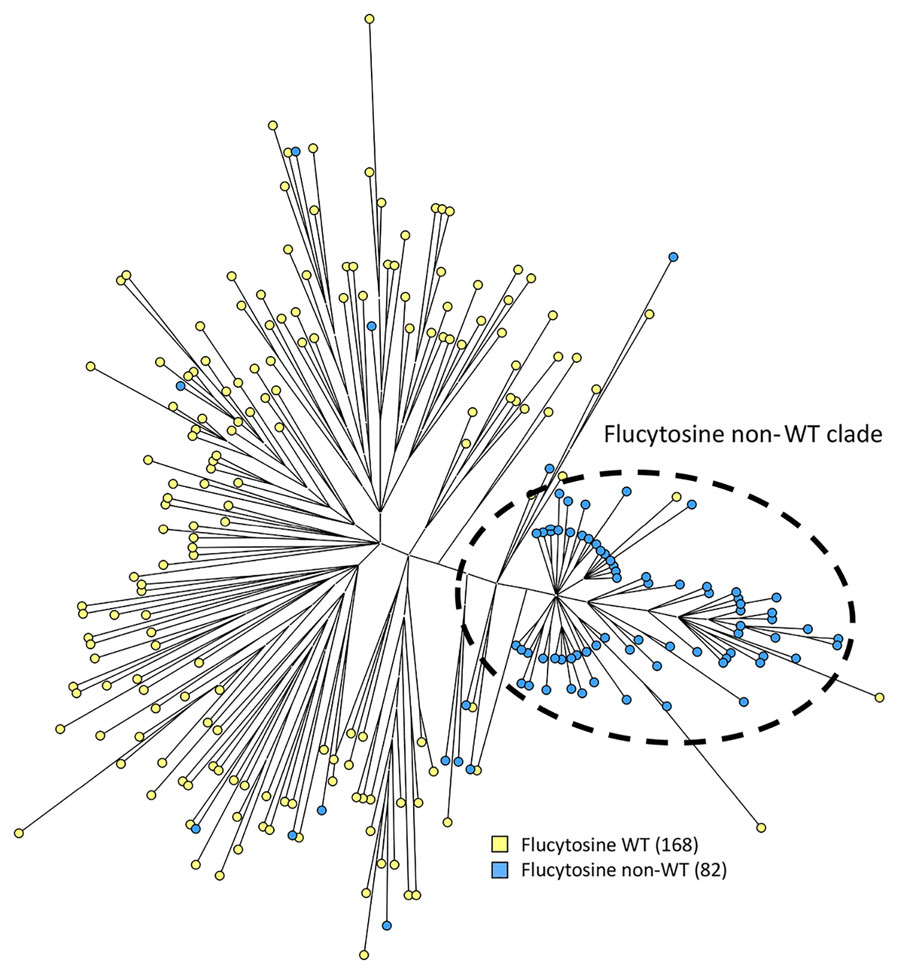Volume 31, Number 7—July 2025
Research
Emergence of Flucytosine-Resistant Candida tropicalis Clade, the Netherlands
Figure 2

Figure 2. Phylogenetic analysis of Candida tropicalis isolates in study of emerging 5-FC–resistant clade, the Netherlands. Maximum parsimony tree of 250 C. tropicalis isolates was constructed. Colors indicate the number of isolates per flucytosine interpretive category. Isolates with a MIC of <0.5 mg/L were classified as WT and >0.5mg/L as non-WT. WT, wild-type.
1These first authors contributed equally to this article.
2These senior authors contributed equally to this article.
Page created: May 15, 2025
Page updated: June 25, 2025
Page reviewed: June 25, 2025
The conclusions, findings, and opinions expressed by authors contributing to this journal do not necessarily reflect the official position of the U.S. Department of Health and Human Services, the Public Health Service, the Centers for Disease Control and Prevention, or the authors' affiliated institutions. Use of trade names is for identification only and does not imply endorsement by any of the groups named above.